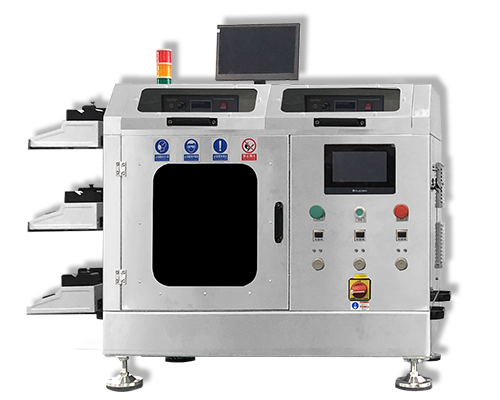Stent Spin Coating Systems
Stent Spin Coating Systems – Ultrasonic Stent Coating Systems – Cheersonic
Percutaneous transluminal coronary angioplasty (PTCA) is a procedure to treat heart disease. A catheter assembly having a balloon portion is introduced percutaneously into the patient’s cardiovascular system via the brachial or femoral artery. The catheter assembly is advanced through the coronary vasculature until the balloon is partially positioned over the occlusive lesion. Once in place across the lesion, the balloon is inflated to a predetermined size to radially compress the lesion’s atherosclerotic plaque, thereby remodeling the lumen wall. The balloon is then deflated to a smaller profile to allow the catheter to be withdrawn from the patient’s vasculature.
Stents are used not only as mechanical interventions but also as vehicles to deliver biological treatments. As a mechanical intervention, the scaffold acts as a scaffold that physically holds open and, if required, widens the channel walls. Typically, stents are able to be compressed so that they can be inserted through a catheter into a small blood vessel and then expanded to a larger diameter once they reach the desired location.
Biological therapy can be achieved through drug treatment of the stent. Drug stents are used to locally administer therapeutic substances at diseased sites. Systemic administration of such drugs often produces adverse or toxic side effects to the patient in order to provide effective concentrations at the treatment site. Local delivery is a preferred method of treatment because the total amount of drug administered is small compared to a systemic dose, but concentrated at a specific site. Therefore, local delivery produces fewer side effects and achieves more favorable results.
One proposed drug treatment approach for stents involves the use of polymeric carriers coated on the surface of the stent. A solution comprising a solvent, a polymer dissolved in the solvent, and a therapeutic substance dispersed in the mixture is applied to the stent. The solvent is allowed to evaporate, leaving a polymer coating and the therapeutic substance impregnated in the polymer on the surface of the stent.
One conventional technique for coating stents is by spraying the stents with a coating composition. If the coating solvent is sufficiently volatile, the spraying process can be sprayed continuously, increasing the coating thickness. However, if the solvent evaporates more slowly than it is applied, the resulting stent coating may exhibit undesirable defects, such as coating “netting” between stent struts.
Therefore, there is a need for a stent coating process that is rapid, yields uniform coatings, and is highly repeatable. The present company provides a device for manufacturing a coating of an implantable device such as a stent and a coating method thereof.
The ultrasonic drug-eluting stent spray coating system can be applied to the preparation of polymer coating for preventing vascular restenosis on the surface of implantable drug-eluting stent. Compared to conventional two-fluid nozzles, ultrasonic nozzles can spray a more uniform drug coating that completely covers the stent without the orange peel and adhesion to a complex stent. The soft atomized spray adheres well to surfaces and coating morphology characteristics can be adjusted by modifying process parameters. In addition, the stent coating obtained by ultrasonic spray coating technology is thinner than dip-coating. Ultrasonic spray coating technology can precisely control the amount of drug sprayed on the stent, making the control of the spraying more precisely.
Chinese Website: Cheersonic Provides Professional Coating Solutions


